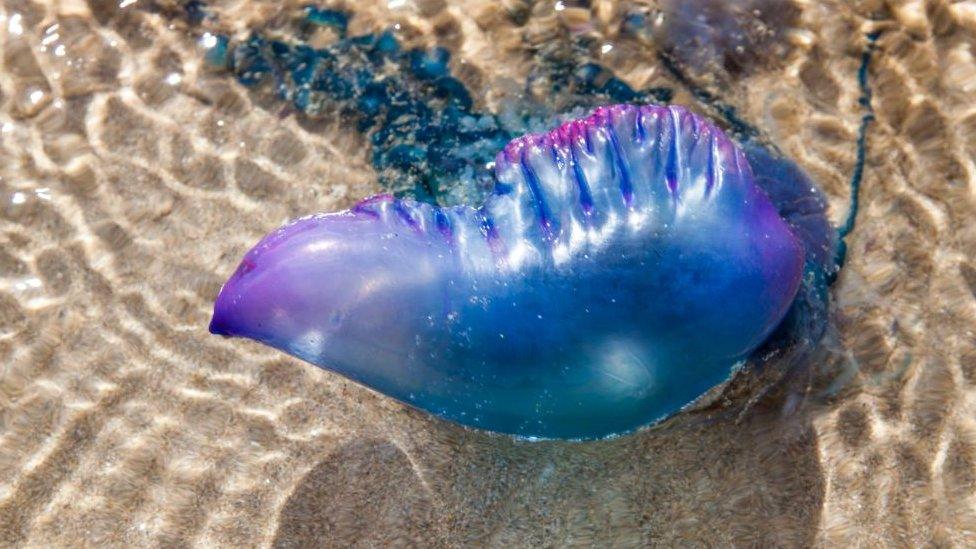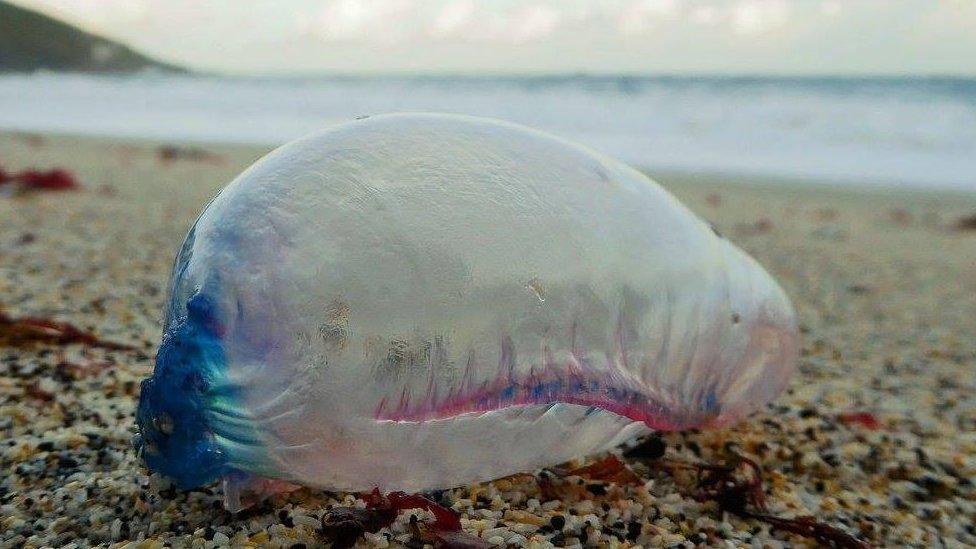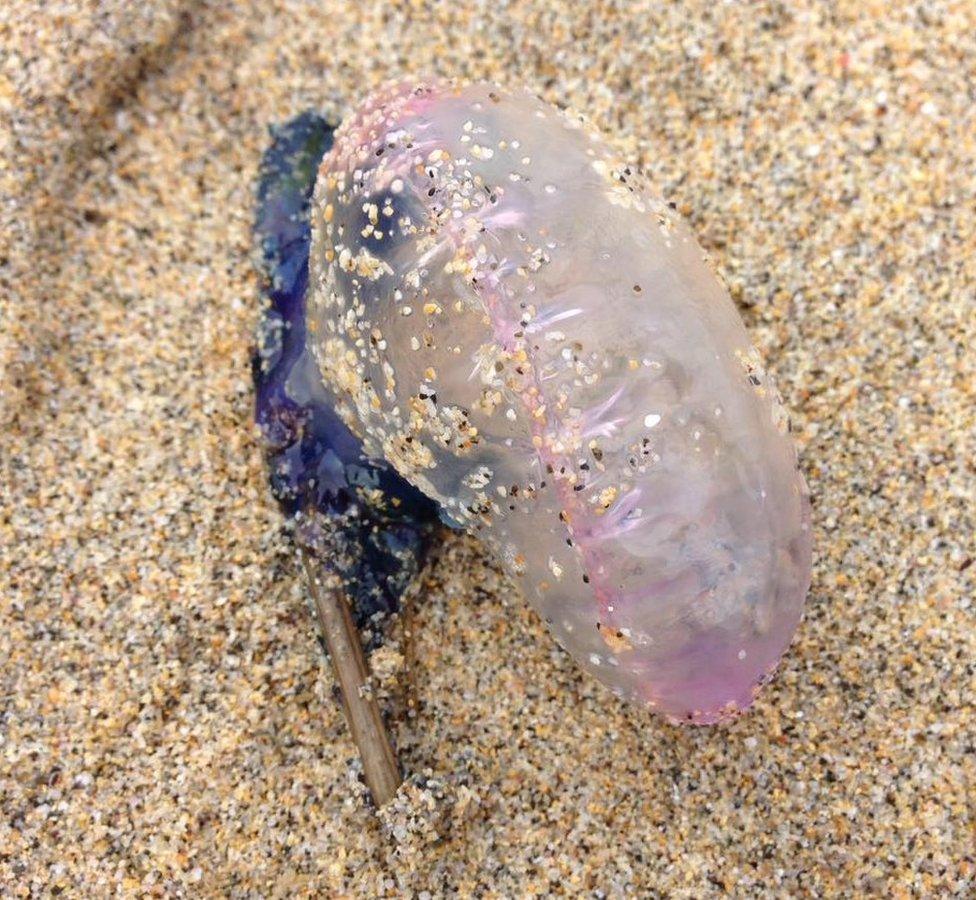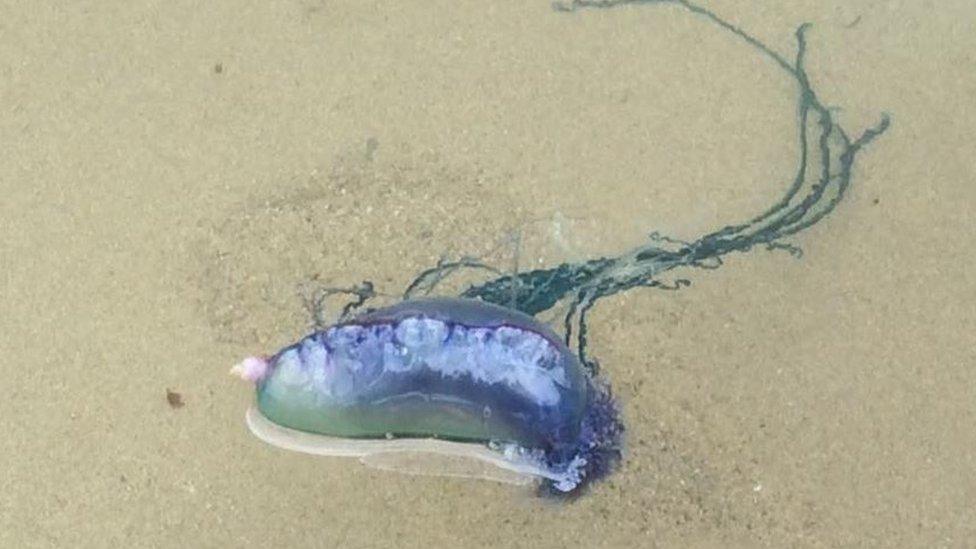Portuguese man-of-war: The things you wanted to know
- Published

The man-of-war can be tempting to children because it looks like a deflated balloon
More Portuguese man-of-war have washed up on beaches along the coast of Cornwall and Wales in what experts say is the biggest stranding since 2012.
Perranporth beach was closed after a large number of the creatures appeared.
Their long purple tentacles can give a painful sting which in extremely rare cases can be fatal, said the Marine Conservation Society (MCS)
Dr Peter Richardson from the society answered your questions about Portuguese man-of-war.

Where does the name come from?
The name comes from the shape of the sail which, when it is inflated, looks like an 18th Century Portuguese battle ship, Dr Richardson said.

This is what a Portuguese man-of-war looks like when it is fully inflated

Is it true that vinegar will help the pain like jellyfish stings?
"There's been all sorts of debate but the most recent scientific research, external has come from National University of Ireland lecturer Dr Tom Doyle.
"He and his team concluded that the best way to treat a sting is to wash the area in vinegar before removing the tentacles with tweezers and then bathing the affected area in warm water of about 45 degrees for 45 minutes."
He said lifeguards in Australia have vinegar at their disposal to treat stings.

What makes the venom fatal?
"The venom contains a combination of amino acids unique to the man-of-war. It is used to paralyse small fish as its prey," said Dr Richardson.
"The sting induces acute pain and leaves red welts on the skin.
"If someone has an allergic reaction or an existing condition it can cause fever, shock and affect the heart and lung functions, although this is extremely rare."

Natalie Lewis sent in this picture taken at Hayle beach

How do they reproduce?
A man-of-war is a siphonophore - a type of an animal that is made up of a colony of organisms working together.
"They have sex organs called gonozooids which can be either male or female," said Dr Richardson. "They release their sperm and eggs into the sea where they meet up and fertilise.
"These create floating larvae which grows a colony of four types of polyps - the float, the sting, the reproductive cells and the digestive system."

What do they eat?
"It's thought the larvae feed on plankton and when they are fully developed they catch baby fish and small adult fish," said Dr Richardson.
"There are some small fish species which live among the tentacles and are covered in a mucus which protects them from the sting."
It is thought that the man-of-war provide shelter while the fish species that live among the tentacles attract large fish which become prey, he said.

Lyn Roberts sent in this picture of a man-of-war found by her daughter and granddaughter on Holywell Bay beach

Do they live on their own or in groups?
"These are solitary animals. They don't shoal or swarm.
"The reason they get together is because they travel in the water whichever way the wind blows," Dr Richardson said.
- Published12 September 2017
